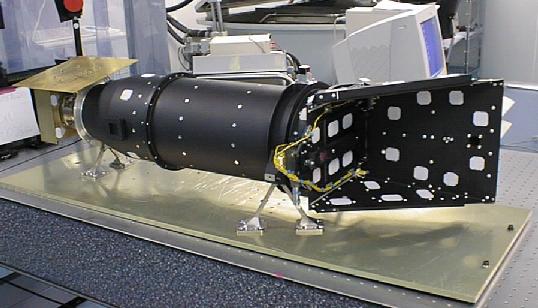 |
 |

|
|---|
Introduction - Optical Monitor Camera - Observing Program
 |
 |

|
|---|
The ESA scientific mission INTEGRAL (The
International Gamma-Ray Astrophysics Laboratory) is dedicated to the fine
spectroscopy and fine imaging of celestial gamma-ray sources in the energy
range 15 keV to 10 MeV with concurrent monitoring in the X-ray (3-35 keV)
and optical (V-band) energy range.
The Optical Monitoring Camera (OMC) is a 20 kg class instrument mounted on
the top of the INTEGRAL payload module. A 6 lens telephoto optical system
is imaging stellar objects on a CCD detector mounted in a Focal Plane
Assembly. An optical baffle provides the necessary reduction of stray-light.
A once-only deployable cover protected the optics from contamination during
ground operations and early operations in orbit.
OMC has been contributed by the following European institutes: Instituto
Nacional de Tecnica Aeroespacial (INTA - Madrid),
Centre Spatial de Liège
(CSL), Mullard Space Science Laboratory - University College London,
University College Dublin - Dunsink Institute for Advanced Sciences,
Astronomical Institute Ondrejov and University of Barcelona.
CSL was
responsible for the optical and straylight cancellation design, the lens
barrel, the baffle manufacturing, the door mechanism and environmental tests.
The main OMC characteristics are:
For additional information about this instrument see the OMC web page at LAEFF.

The participation of the Liège University and of the Centre Spatial is supported through a PRODEX contract with the Belgian Science Policy.
J.-P. Swings (IAG) is a co-investigator of the OMC consortium, which gave us access to Guaranteed Time for the Observing Program.
| Welcome | Research Topics : Space Astrophysics : INTEGRAL | Preprints | Contacts |